Museo Larco, Lima
A review of a visit to the Museo Larco, a fine private collection of pre-Hispanic art in Lima. Wonderful pieces thoughtfully displayed, but as one of Lima’s top tourists sites I found myself valuing the quiet spots the most. WARNING: some images NSFW.
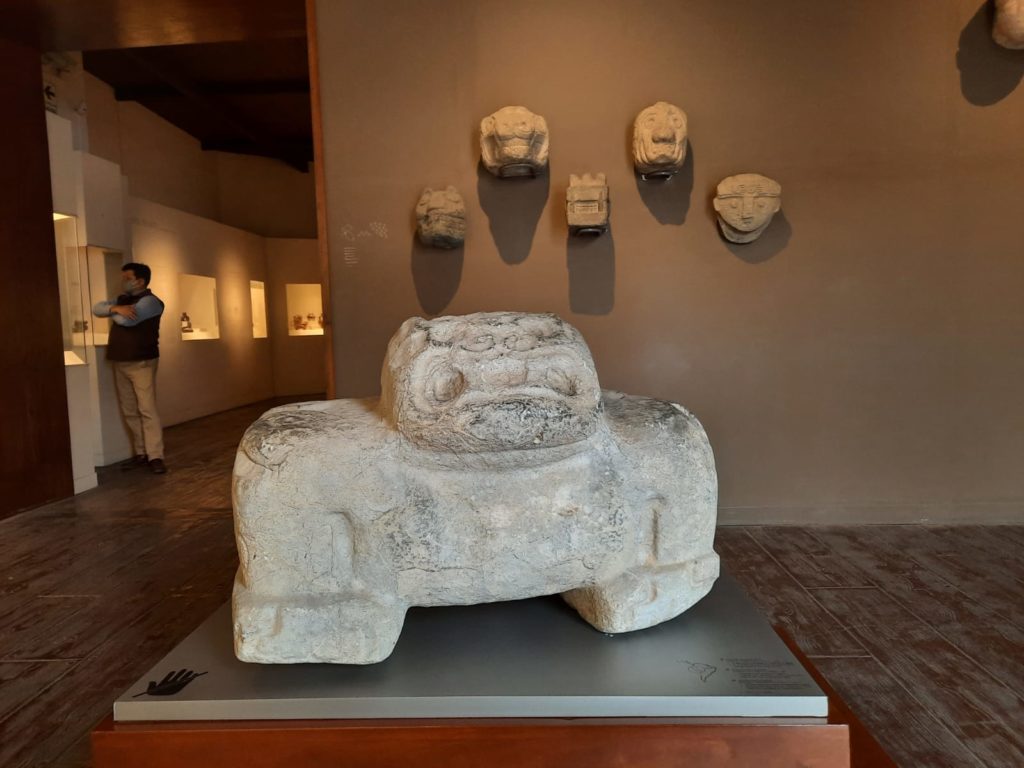

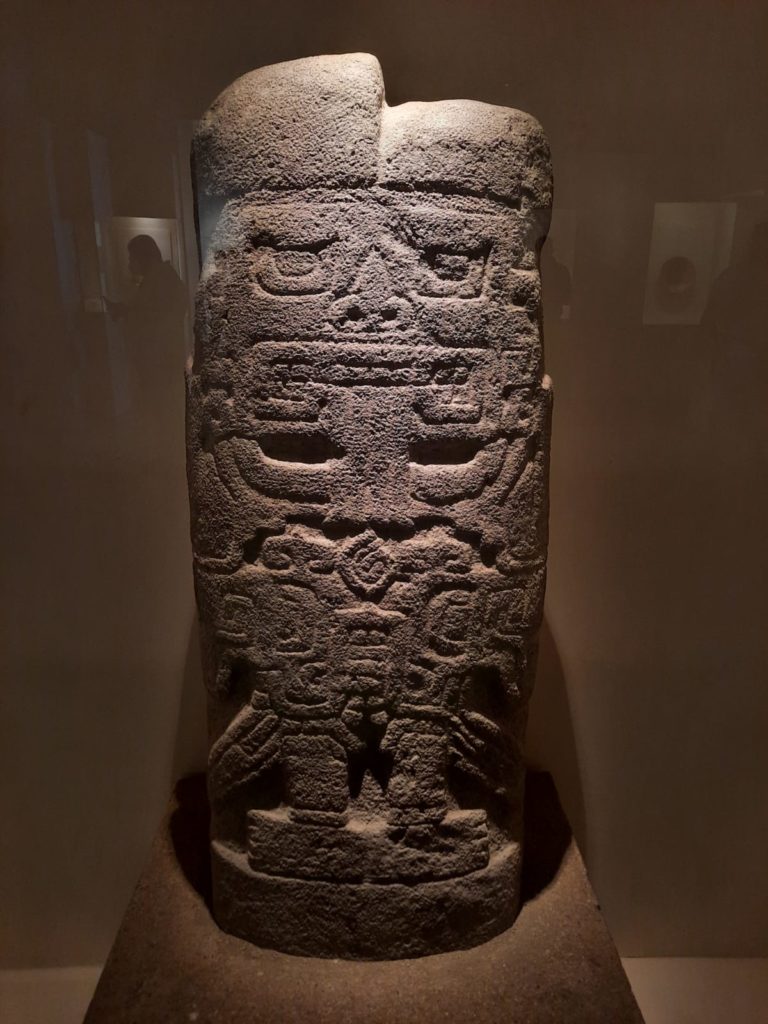

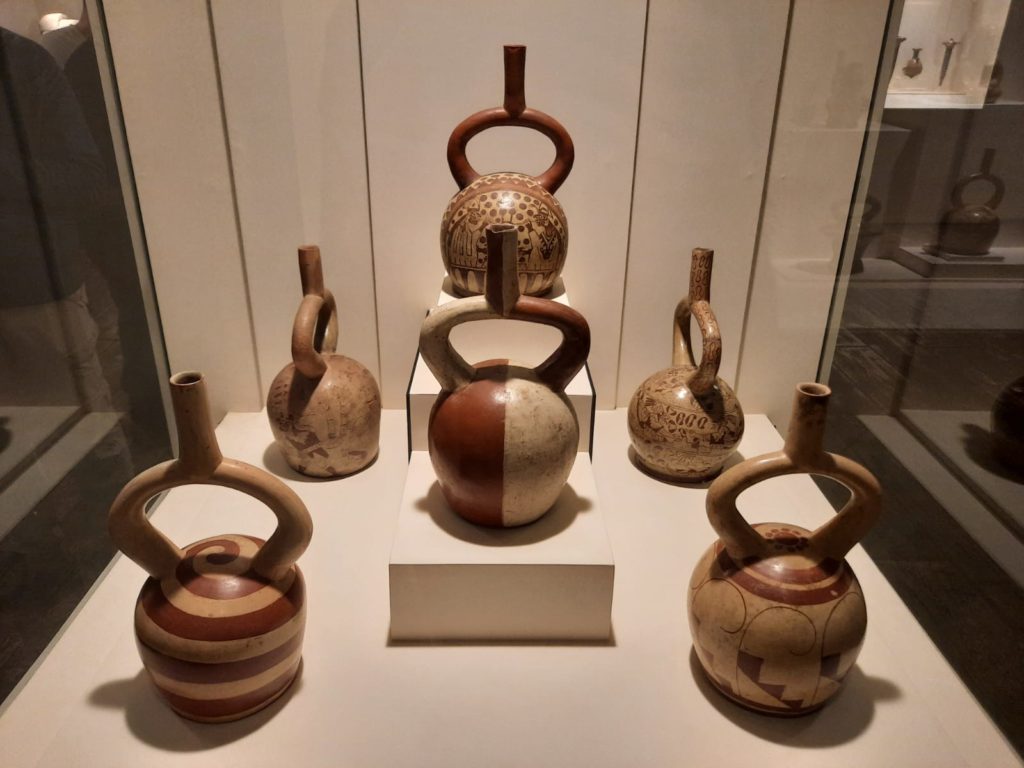

Origins Of The Museo Larco
The most recent post here on the Salterton Arts Review was of an important private collection of Peruvian art made available to the public in an impressive historic building. Today we will talk about the Museo Larco, which is… an important private collection of Peruvian (or in this case pre-Hispanic) art made available to the public in an impressive historic building. So what’s with all the private collection museums in Lima?
I have opined previously that maybe it’s connected to the nation’s history. Peru gained independence in 1821, and so during its prime museum-forming years the nation probably had things on its mind other than gathering together and displaying art and artefacts. There were also fortunes to be made at this time, for example in the guano trade. Large fortunes and the funds and leisure they afford often seem to turn one to art collecting.
In the case of the Larco family, their wealth seems to have been connected to sugar cane and agriculture. Rafael Larco Hoyle was born in 1901, and educated in the US. This gave him an interesting, almost outsider’s perspective on Peru on his return. Aided by a gift from his father of a Moche ceramic and collections already in his family, Larco Hoyle developed a serious interest in his country’s heritage. He recognised the importance of safeguarding historic treasures, and at the age of 25 was able to found today’s Museo Larco and purchase several different collections to fill it. The museum opened to the public in 1926. Larco Hoyle remained an active archaeologist, collector and scholar over the subsequent decades.
So perhaps that’s the answer to why private collection museums are so prominent in Peru. It’s a combination of personal passion in a particular area, a preponderance of wealthy individuals who could build and house collections, and a gap where there were not pre-existing royal or other historic collections and so institutions had to be started from scratch. Or at least that’s my non academic assessment!


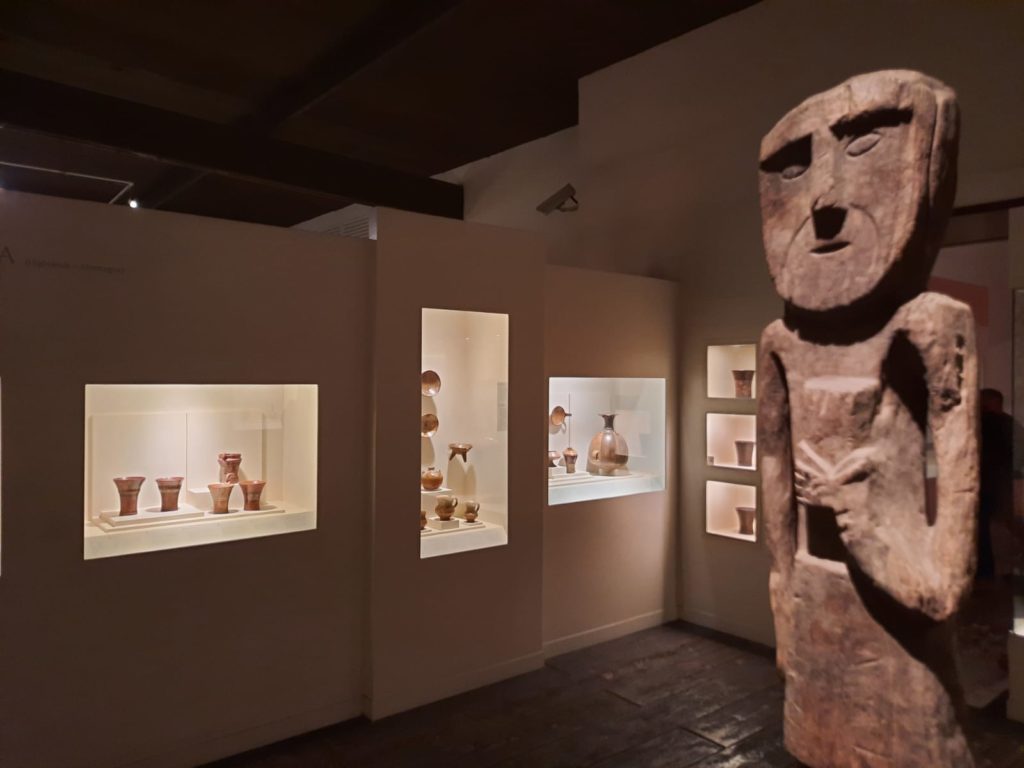
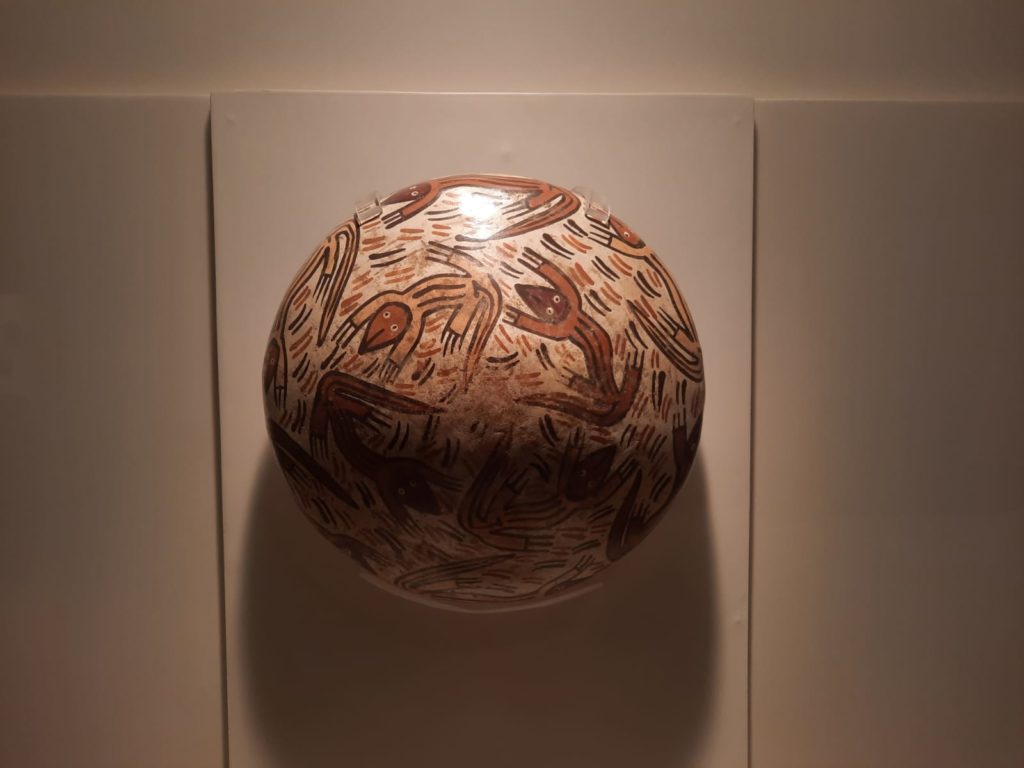
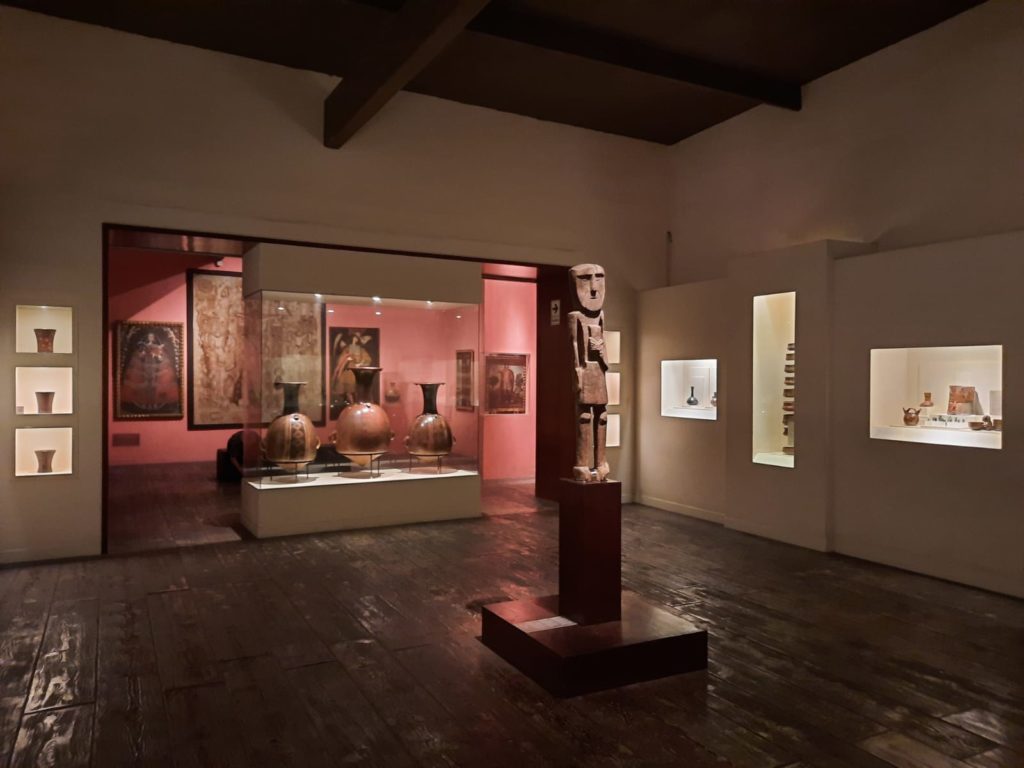

The Museo Larco Today
Being that Rafael Larco Hoyle was a prolific collector, the Museo Larco has tens of thousands of objects to choose from in its displays. The museum inhabits a large Viceregal building (we discussed the Viceregal period in greater depth here); the actual museum space is reasonably small in comparison to the overall complex.
The collection itself spans all of pre-Hispanic Peruvian history. There are neolithic tools, and artefacts from all the cultures we have already discussed, like the Lima, Nazca, Moche, and of course Inca. There are a few objects from the colonial period, mostly for comparison. And although the bulk of the collection seems to be ceramics, there are also stone sculptures, textiles, objects in gold and silver, musical instruments, mummies, and more. A lot to cover in only a few rooms!
As a complete aside, I found during my visits to Peruvian museums that Nazca ceramics were by far my favourite. They are quickly recognisable as they are colourful with simple designs, less realistic than Moche or Inca ceramics. But most intriguingly they depict a cast of bizarre supernatural characters that reminded me of something out of a Studio Ghibli film. And lots of depictions of severed heads. Altogether point to a very unique culture!
Anyway, the permanent collection display at the Museo Larco covers all of these time periods, cultures and media with well-selected objects. The curation is thematic , with lots of information panels for extra reading. Separate to these curated rooms are a nice restaurant, an infamous separate gallery of ‘erotic art’ (see below) and a visible storage section (also see below).
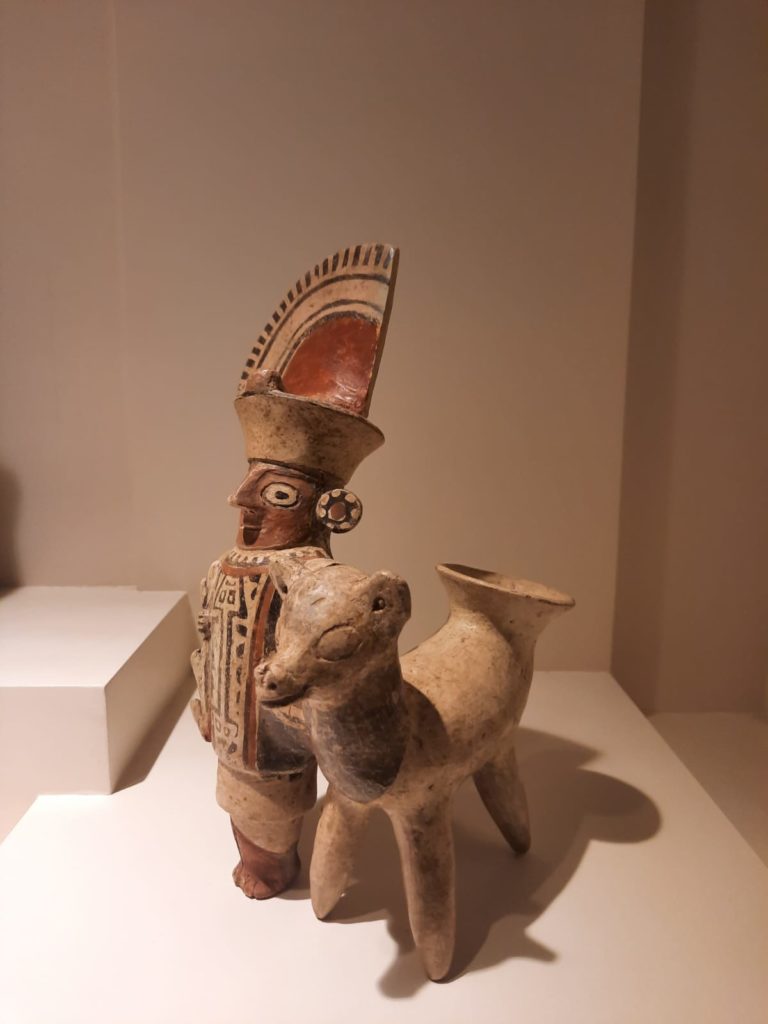
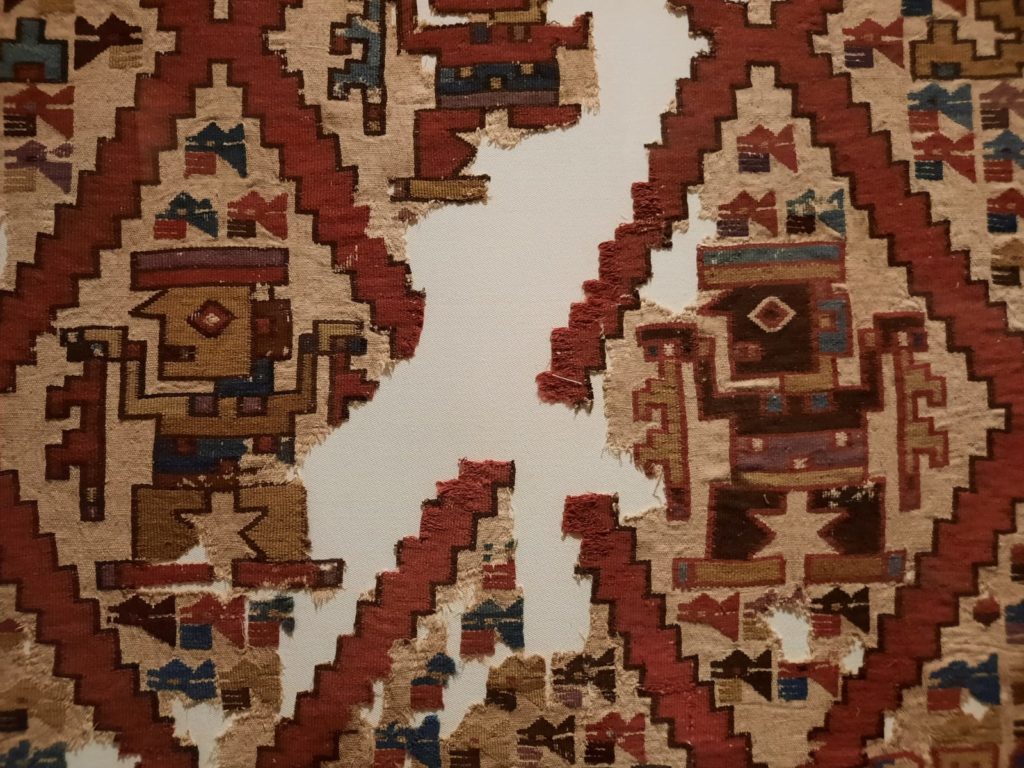


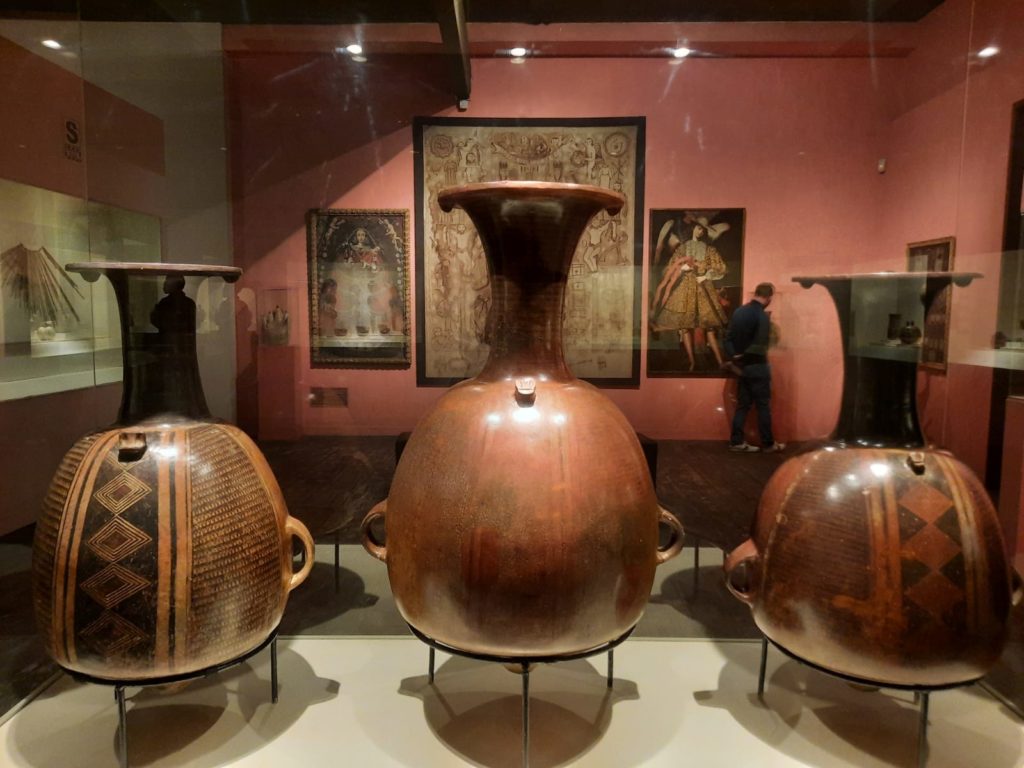

Visiting The Museo Larco
Given that the Museo Amano (another private collection, this time of ancient textiles) wasn’t open during my Peruvian trip, the Museo Larco was perhaps the museum I was most looking forward to. Unexpectedly, I was a little disappointed by my visiting experience. On reflection, I think this was mostly to do with what was going on around me – and timing – rather than the museum itself.
For the most part, Peru follows the European model where museums are open over the weekend but closed on Mondays. The Museo Larco is one that bucks this trend and is open on a Monday. This seemed convenient to me, so Monday is when I visited. This was probably a mistake, as so did everyone else.
I have previously commented on the fact that professional tour guides are a prominent feature of Peruvian tourism; this has the impact of a lot of conversation in groups large and small. Background conversation sometimes makes it difficult for me to focus in a museum environment, and this was one of those occasions. So I sometimes found myself pausing until a particularly chatty guide had passed. It’s a popular tourist site so I think the groups and guides are always a fact of life, but perhaps a different day of the week might have helped.
The astute among you might be thinking that this is more about me than about the Museo Larco. And you’d be right. It’s great that it’s somewhere you can visit when other museums are closed. And it’s not their fault if I can’t read museum texts with someone talking nearby. But if you’re anything like me, just keep this in mind. Depending on how comfortable you are with social distancing, the number of visitors gathering around key objects is also something to consider.
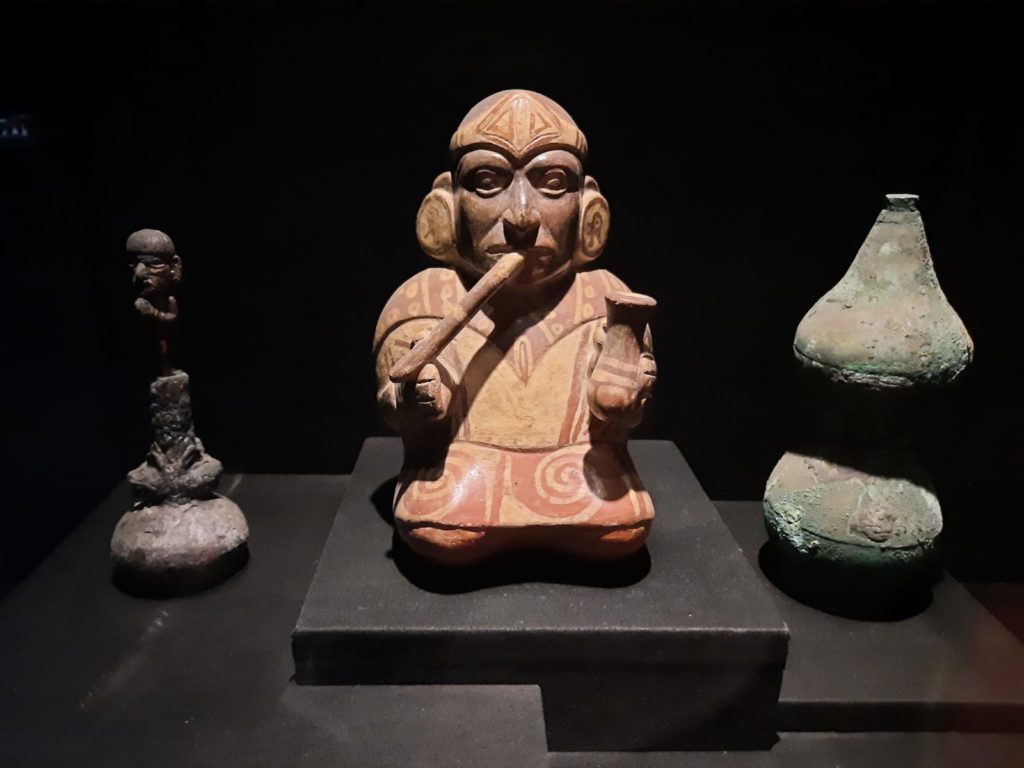

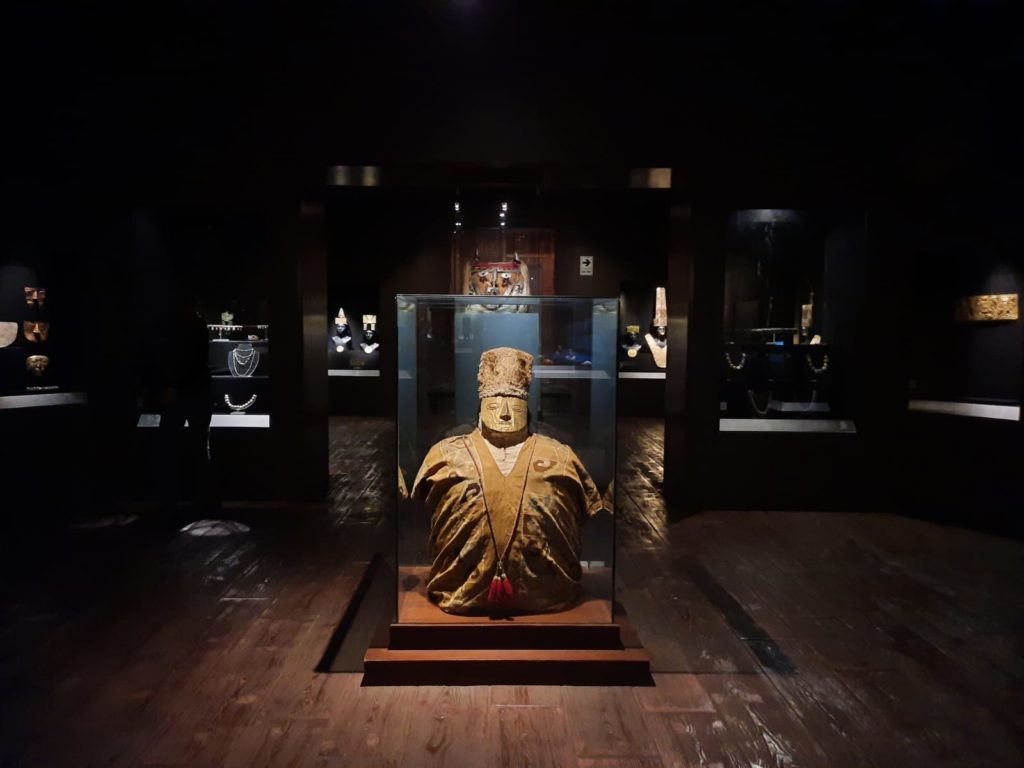
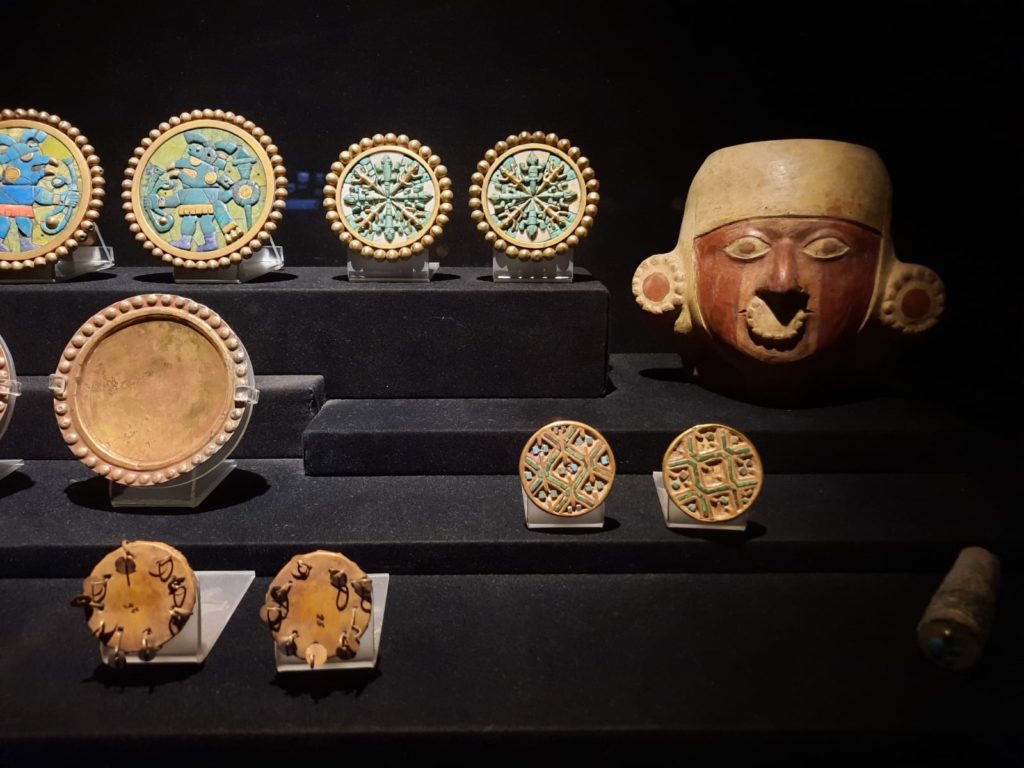

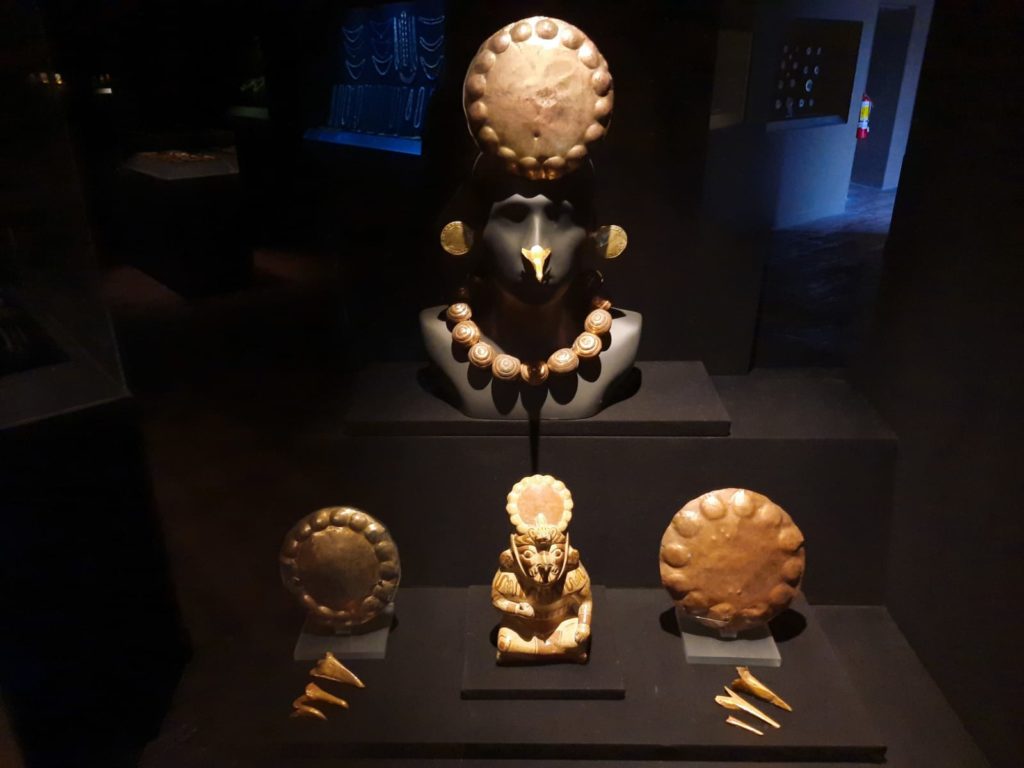
Get To What’s Actually On View, Already!
Ok fair point – enough chit chat, let’s talk about what you can see! Obviously, drawing from such a large collection, there are some fantastic objects on view. Some of the ceramics, like the Moche portraits, are incredible works of art. Others, like the Nazca ones I mentioned, are quirky and interesting. You can learn about everyday life, ceremonies and rituals (including sacrifices), life and death, and politics and leadership, through the works on display.
For my money, there were a few particular highlights. First off, I liked the textiles. They were good examples, given plenty of space. It’s relatively rare for textiles from earlier cultures to survive, but Peru’s harsh desert regions have done the world a favour in this respect.
I also liked the way the curators use objects in the collection to illustrate particular points. For instance, I had read in the Museo Pedro de Osma about how the depiction of archangels in colonial Peruvian art was connected to Inca bird deities. In the Museo Larco, I saw an archangel and a bird deity side by side. Similarly I like when, for example, a musical instrument is next to a ceramic of someone playing the same thing. Or jewellery next to a depiction of someone wearing it. It’s a technique that also worked for me in the British Museum’s exhibition Peru: A Journey in Time.
And lastly, I really liked the way the Museo Larco displayed the gold and silver regalia that Peru’s leaders once wore. They did a better job of bringing it to life than any other museum I visited. It helps that they have a great selection. But for me, it finally put all those nose ornaments and other bits and pieces into context.

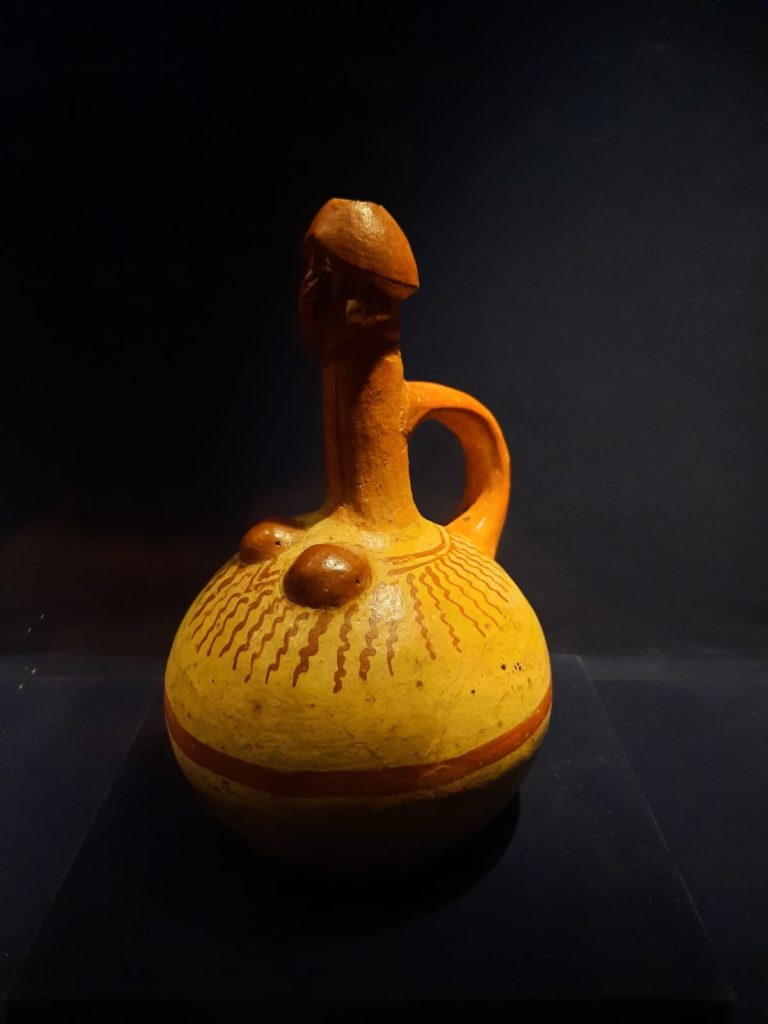
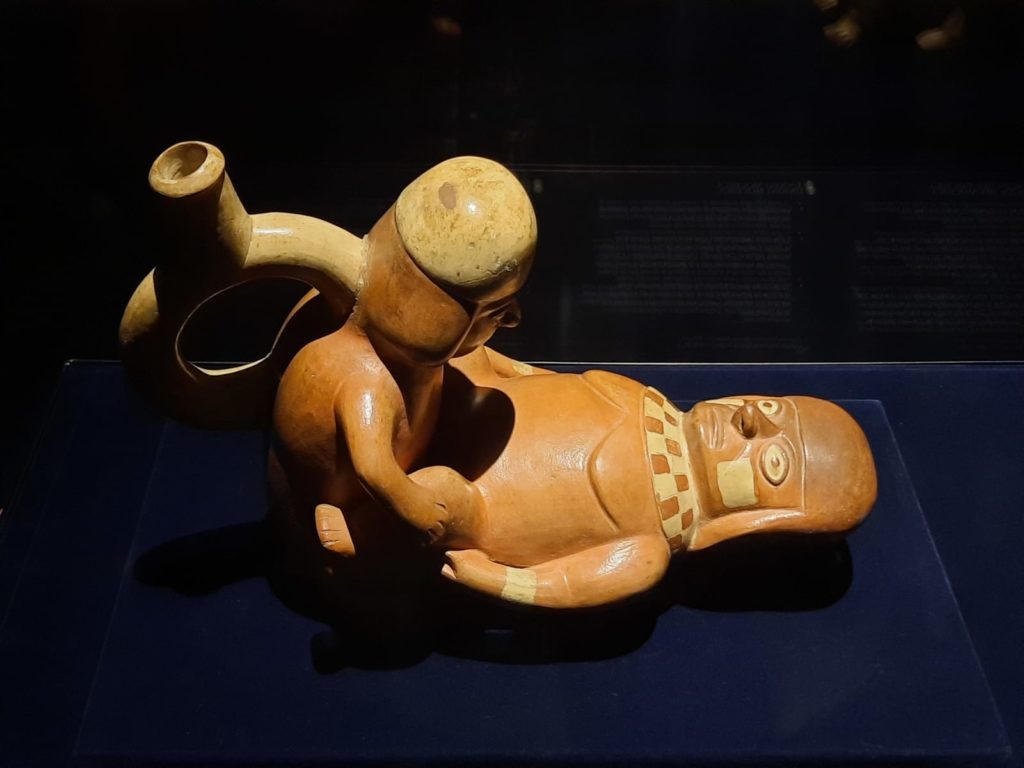


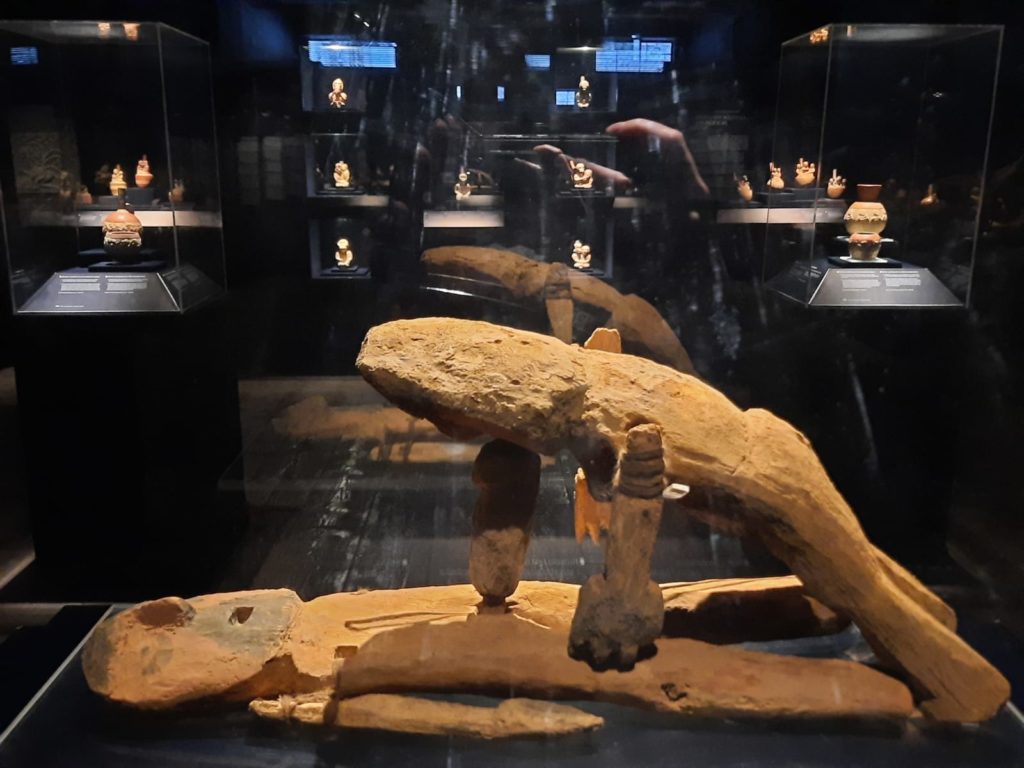
Erotic Gallery
I couldn’t possibly talk about the Museo Larco without giving more detail on the Erotic Gallery, could I? Some of Peru’s ancient cultures were very prolific creators of erotic art. And since Larco Hoyle was a prolific collector, there’s a lot to choose from. The Erotic Gallery actually spans a lot of topics, from fairly neutral depictions of genitalia; to things that are more ‘circle of life’ like childbirth and breastfeeding; to “no, that one’s definitely erotic art!”. It’s not just humans, either. There are animals, and a healthy selection of underworld characters fertilising the mortal plain through sexual acts.
There’s no getting away from the fact that the effect on viewers is partly just titillating. You go there to have a look at the ‘naughty’ ceramics; it could potentially be embarrassing depending on who you’re there with. It’s also very educational, though. Views on human sexuality are a point of great divergence across cultures. So it’s interesting to see how the Moche or Inca or other cultures viewed reproductive and non-reproductive sexual acts, and what place they had in their society. It has a lot more to do with vital forces than any notions of sin or morality.
Larco Hoyle himself had pretty frank views on these objects within his collection. He wrote a book on the depiction of sexuality in pre-Columbian art in 1962. The Erotic Gallery, like this work, attempts to display objects for viewers to draw their own conclusions without too much mythologising or interpretation. It’s a pretty unique feature of a more or less archaeological museum. And well worth looking at if you visit the Museo Larco.


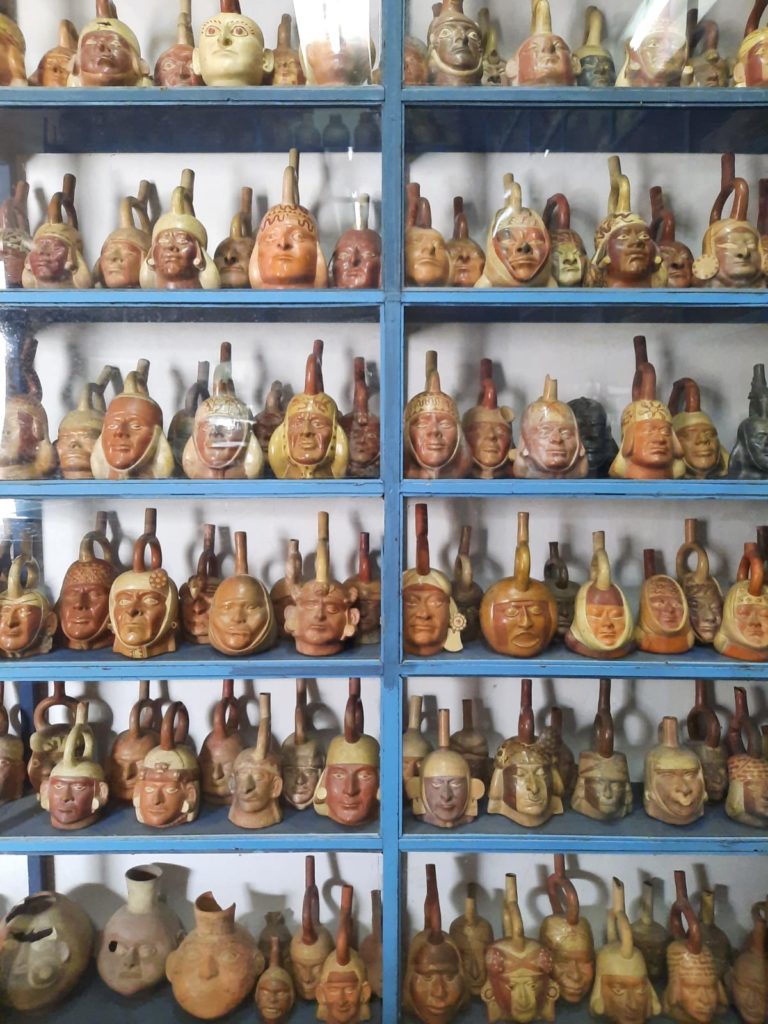
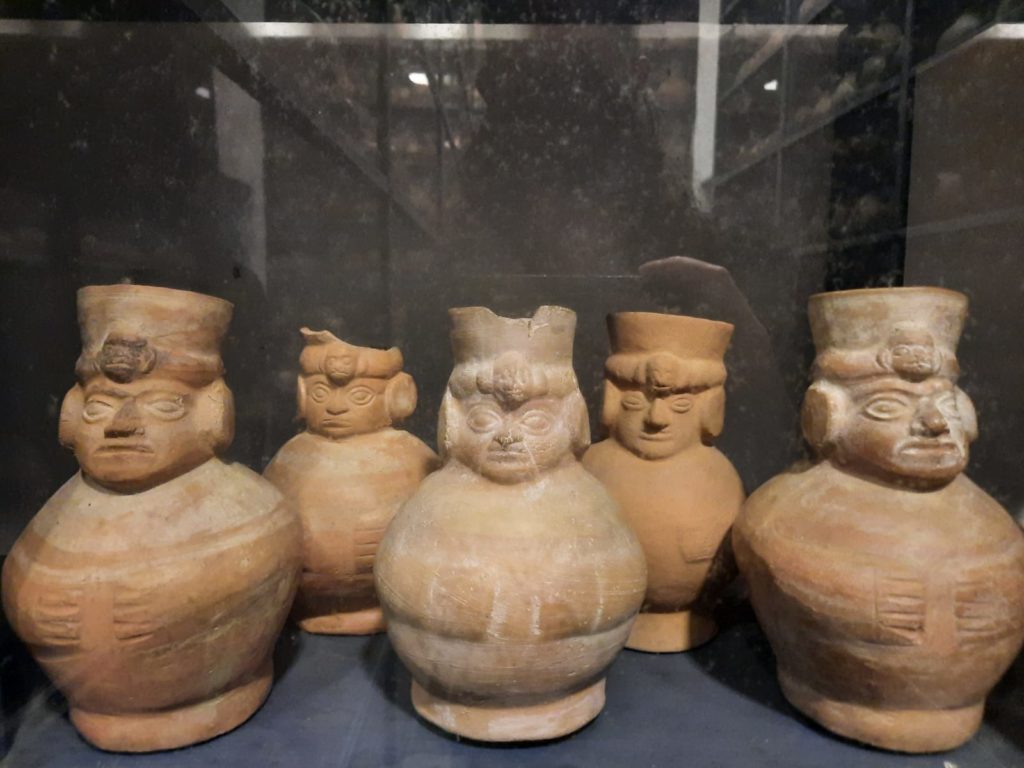
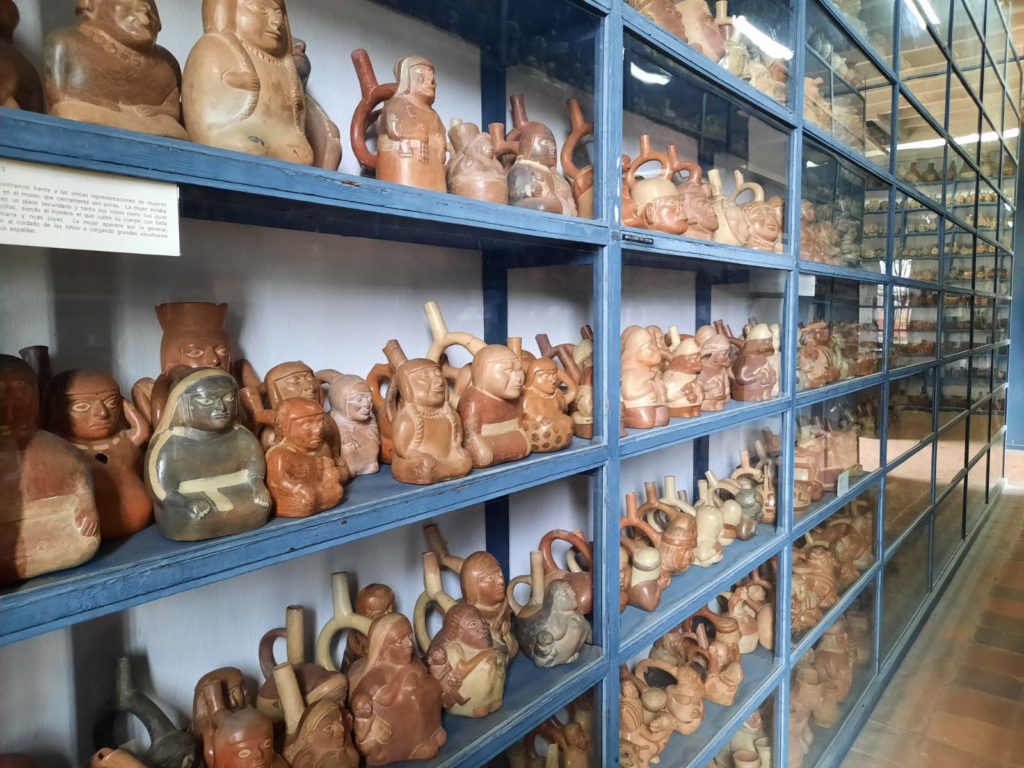
Visible Storage
And now, I have saved the best for last. Museum nerds, pay attention – here is the Museo Larco’s visible storage! This is suggested as the first stop on a visitor’s itinerary. I loved it so much that I came back again at the end, after I had seen everything including the Erotic Gallery and had a nice lunch in the cafe.
I don’t know if I can quite articulate what I love so much about visible storage in general. It has something to do with a behind-the-scenes glimpse, seeing what would otherwise be off limits. But I think it is also because there are no demands on your time or attention in a visible storage space. All objects are presented equally, as space allows. You aren’t being told that this is the most important example of X. Or being asked to read a text about Y. You can just flit around, looking at what interests you.
And the visible storage at the Museo Larco is vast. I’ve included a video above – whenever you think you’ve reached the end, there’s more! It’s all ceramics, and arranged thematically. This has a great visual impact: all the animals are together, all the faces, all the gods, all the plants. As much as I was a little disappointed by my experience of the Museo Larco generally, it was worth it for the visible storage alone.
So I think for most visitors, and for many reasons, the Museo Larco is one to visit during a trip to Lima. It could be that you want to see the best of the best of pre-Columbian ceramics. Or that you love a bit of erotic art. Or that you want to nerd out over visible storage like me. Maybe you just need something to do on a Monday? Either way, if what you’ve read above appeals then plan your trip.
Salterton Arts Review’s rating: 3.5/5
Trending
If you see this after your page is loaded completely, leafletJS files are missing.

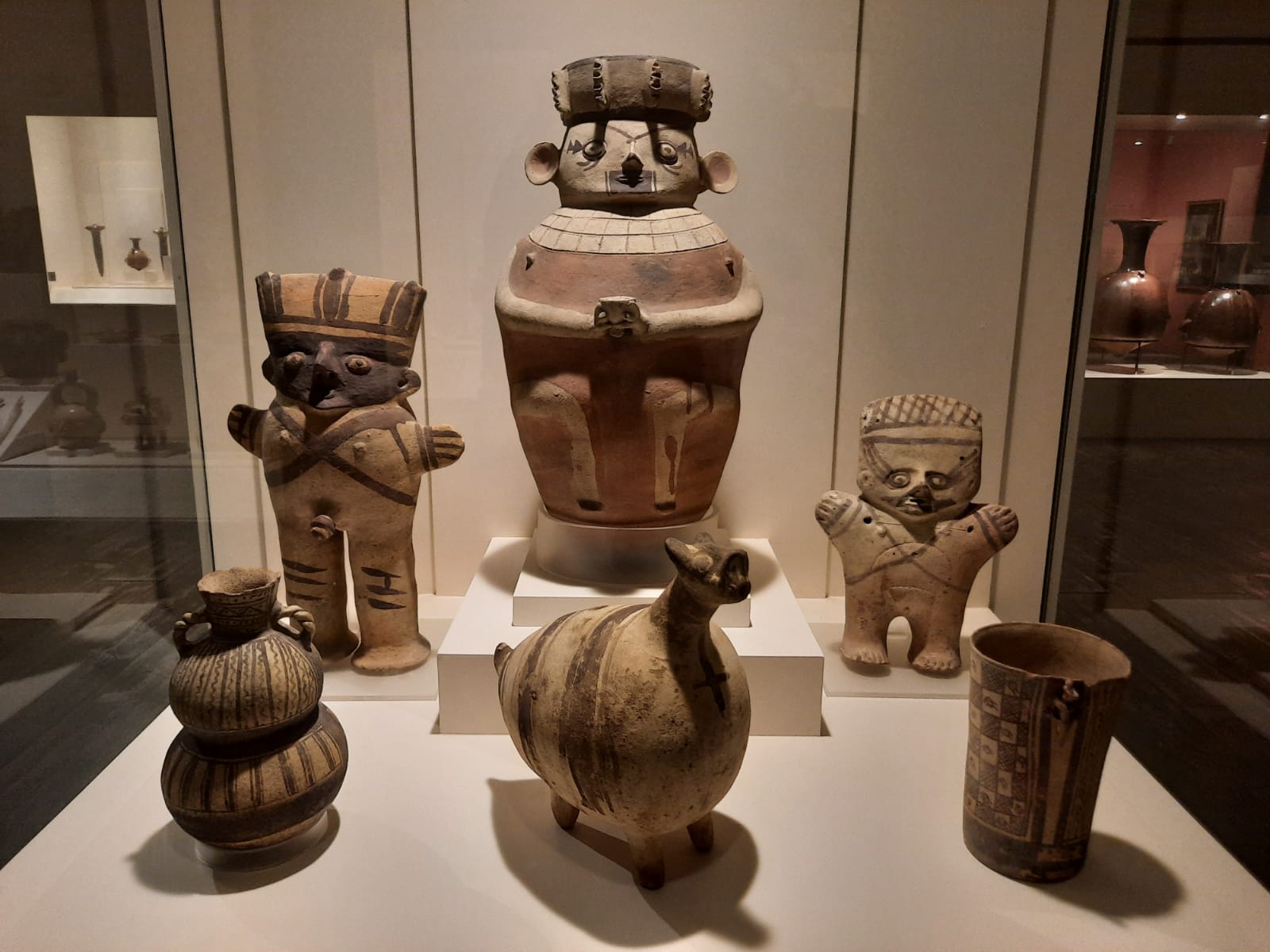
4 thoughts on “Museo Larco, Lima”